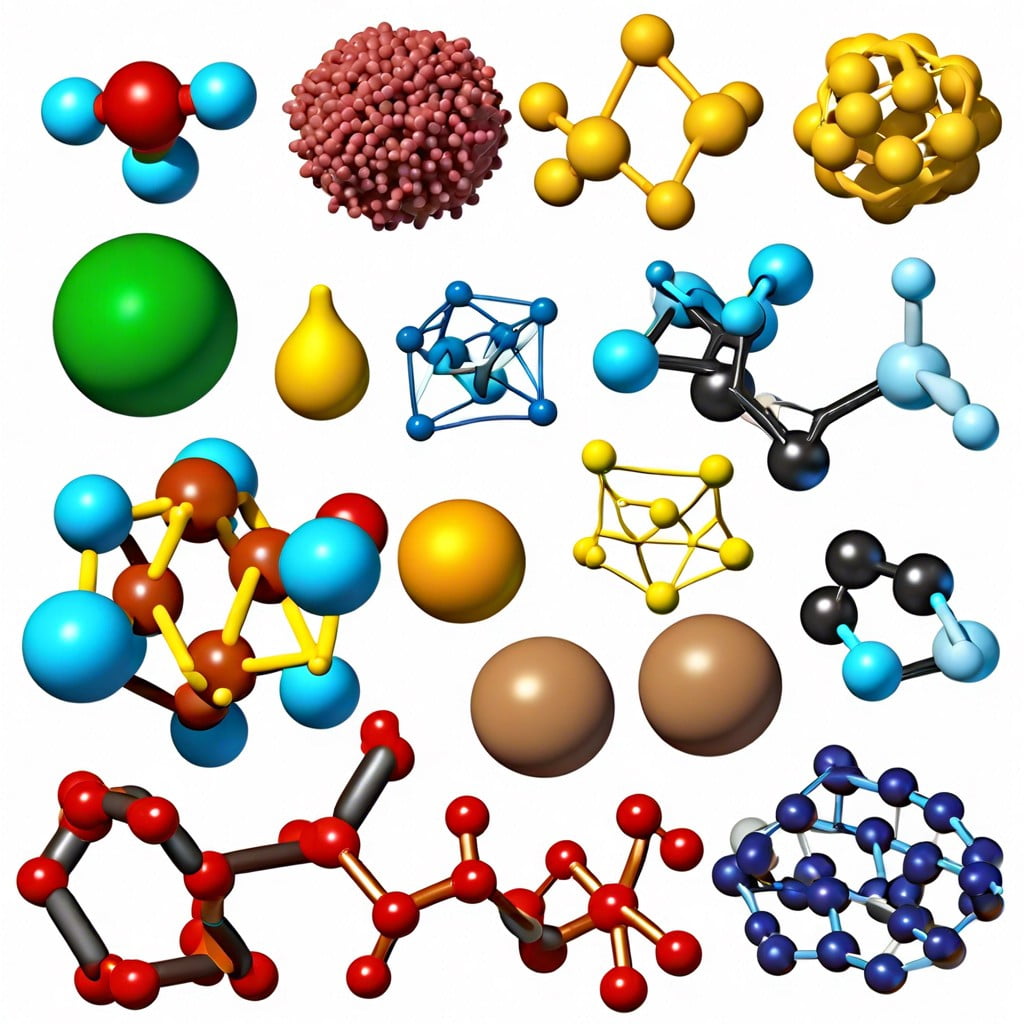In this article, you will learn about cellulose, a natural carbohydrate polymer widely used in construction for its strength and lightweight properties.
Key takeaways:
- Carbohydrates are essential biomolecules and serve as energy sources.
- Starch is a carbohydrate polymer that can be used as an adhesive and bioplastic in construction.
- Cellulose is a carbohydrate polymer used for insulation and biodegradable materials.
- Carbohydrate polymers have applications in food, textiles, pharmaceuticals, and packaging.
- Carbohydrate polymers are sustainable and contribute to green manufacturing practices.
Classification of Carbohydrates

Carbohydrates, often referred to as saccharides, are biomolecules consisting of carbon, hydrogen, and oxygen atoms. They are essential for life and serve as the primary energy source for most organisms.
Monosaccharides, the simplest form, are the building blocks of more complex carbohydrates. Glucose and fructose are well-known examples of monosaccharides. Two monosaccharides can join to form disaccharides, such as sucrose (table sugar) and lactose (milk sugar).
Oligosaccharides consist of a few monosaccharide units linked together. They can have roles in cell recognition and signaling. Meanwhile, polysaccharides are long chains of monosaccharides linked by glycosidic bonds. This category includes starches and cellulose which play critical roles in energy storage and structural support, respectively.
The molecular structure of these carbohydrates—linear or branched—largely determines their function and properties. Understanding these classifications is imperative for grasping the role of carbohydrate polymers in various applications.
Starch As a Carbohydrate Polymer
Starch comprises long chains of glucose units linked together, known as polysaccharides. The primary sources of starch are plants, where it serves as a vital energy reserve. Two types of molecules, amylose and amylopectin, make up starch. Amylose is linear and responsible for the firmness of starches, while amylopectin is branched, making it more soluble and easy to digest.
In construction, starch finds its place as an eco-friendly adhesive due to its ability to gelatinize and form sticky solutions. When heated with water, starch molecules swell, break down, and unleash their adhesive properties. This characteristic is harnessed to create biodegradable packing materials, wallpapers, and even as a binder for building materials like gypsum and insulation products.
Starch-based polymers are also explored as an alternative to conventional plastics in construction. These bioplastics can be used for components like interior panels, flooring, and acoustic tiles. The advantage they offer over traditional materials is their ability to decompose naturally, reducing environmental impact.
Furthermore, starch can be chemically modified to enhance its properties, making it more resistant to water or altering its thermal plasticity. Such modifications expand its applications across different areas of construction and underscore starch’s versatility as a construction polymer.
Cellulose As a Carbohydrate Polymer
Cellulose is the most abundant organic polymer on Earth, found in plant cell walls. Its structure consists of long chains of glucose molecules linked together, which gives it high tensile strength and makes it insoluble in water. When observed under a microscope, cellulose fibers exhibit a strong, crystalline arrangement that contributes to plant rigidity.
In construction, cellulose is often used as an eco-friendly insulation material. It offers excellent thermal properties and can significantly reduce energy costs. Moreover, due to its ability to block air flow and absorb sound, cellulose is an effective acoustic insulator.
One of the remarkable aspects of cellulose is its biodegradability. As an organic substance, it can be broken down by microorganisms, reducing environmental impact. This characteristic also allows for the production of biodegradable plastics, making cellulose-based materials a sustainable alternative.
Additionally, researchers have engineered cellulose polymers at the nanoscale, leading to the development of cellulose nanofibers and nanocrystals. These nanomaterials boast exceptional strength and lightweight properties and are gaining attention in advanced construction applications such as high-strength composites and environmentally friendly building materials.
Common Applications of Carbohydrate Polymers
Carbohydrate polymers, primarily starch and cellulose, find diverse applications in various industries due to their biodegradability and renewable nature.
In the food industry, starches are utilized as thickeners, stabilize emulsions, and as gelling agents. They are key in products such as sauces, puddings, and salad dressings, as well as being used to create edible films and coatings that extend shelf-life.
In construction, cellulose is used to produce materials like cellulose insulation, which is an eco-friendly alternative to fiberglass and foam insulations. Non-toxic and energy-efficient, it provides effective thermal regulation in buildings.
In the textile industry, cellulose fibers are spun into threads for weaving fabrics. Rayon and lyocell, derived from cellulose, offer a sustainable option for clothing, combining comfort with environmental responsibility.
The pharmaceutical and medical fields leverage starch-based polymers for controlled drug delivery systems, thanks to their biocompatibility and ability to be engineered to release medication over time.
Finally, in the packaging sector, both starch and cellulose are harnessed to create bioplastics and biodegradable packaging materials. These reduce dependence on fossil fuels and help combat plastic pollution.
Carbohydrate polymers, therefore, are integral to the development of sustainable materials across a wide range of applications. Their versatility and environmentally-friendly attributes make them valuable resources in the ongoing pursuit of green manufacturing practices.
References and Further Reading
To delve deeper into the world of carbohydrate polymers, several resources are available that can expand your understanding of this fascinating subject. Highly respected academic journals such as “Carbohydrate Polymers” offer peer-reviewed research articles discussing recent advances in carbohydrate polymer science. For a more comprehensive overview, textbooks like “Carbohydrate Chemistry: Monosaccharides and Their Oligomers” by Angelo Caravia provide in-depth explanations suited for students and professionals alike. Online databases such as ScienceDirect can be utilized for accessing a wide array of scholarly articles and reviews. Furthermore, professional organizations like the American Chemical Society host conferences and seminars, which can be valuable for networking with experts and keeping abreast of the latest developments. Always ensure to consult credible sources to support accurate and reliable information.
Recap




